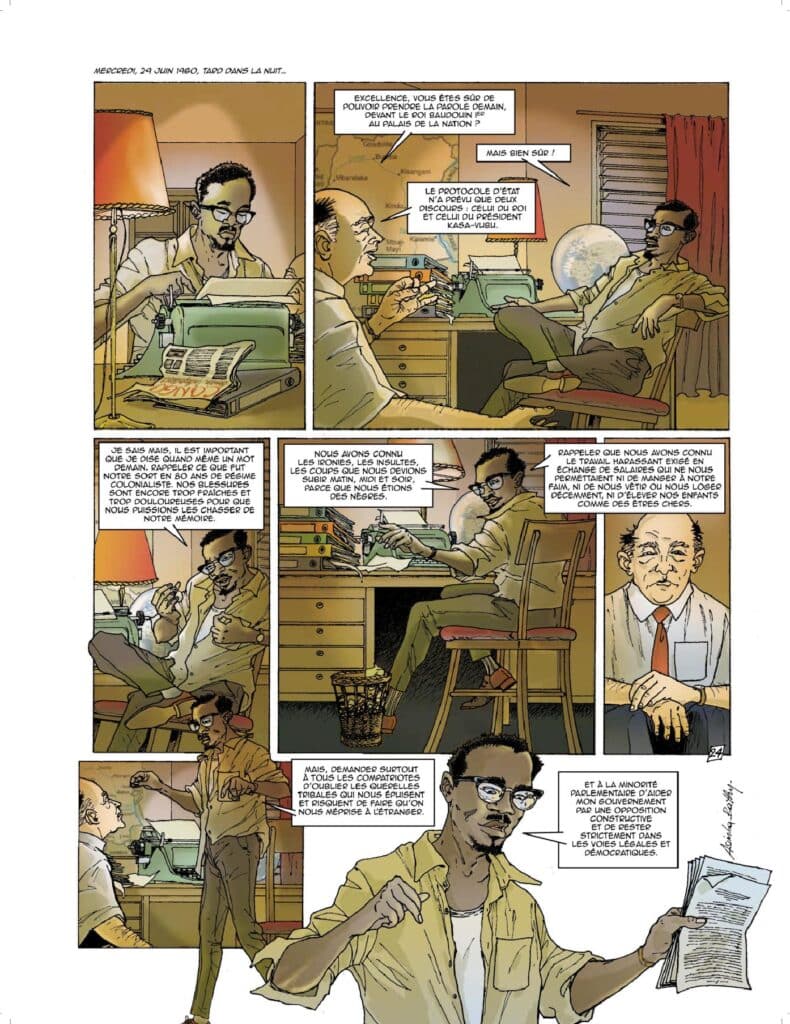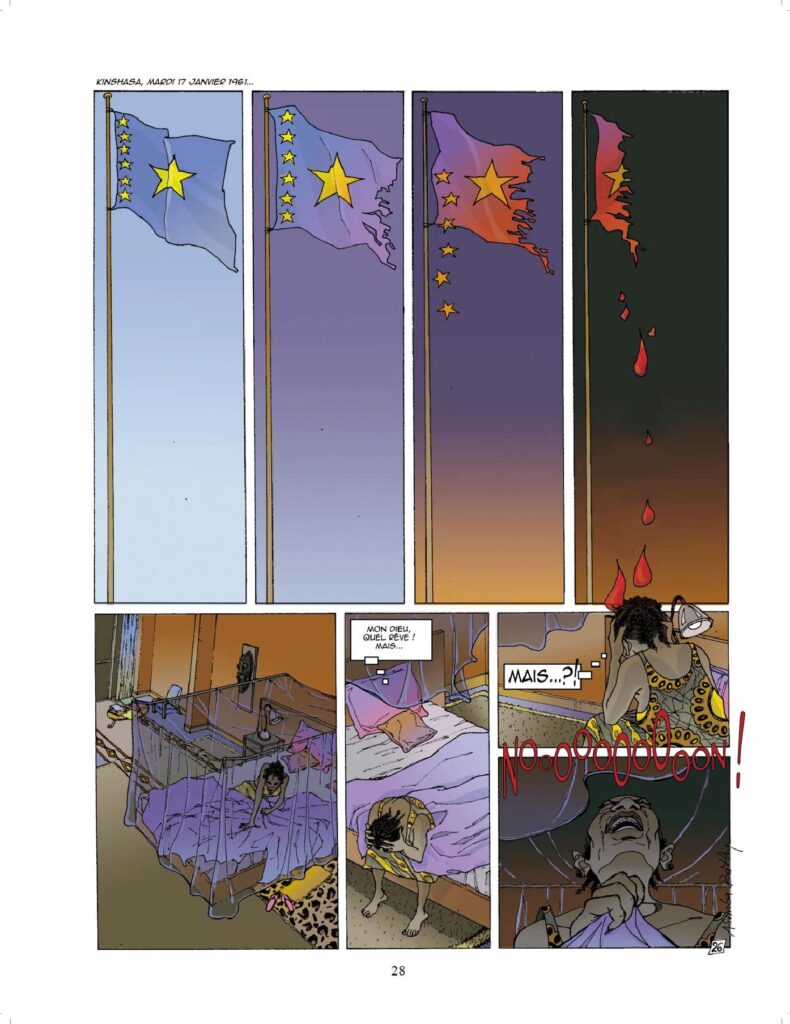Your new comic “Lumumba” was published on January 12. Can you explain for our international readership who Patrice Emery Lumumba was?
Lumumba, whose real name was Isaie Tawosa Tasumba, was a great Congolese political figure; the very first Prime Minister after Congo gained independence from Belgium on June 30, 1960. He was the victim of a plot that led to his assassination onJanuary 17, 1961 in Katanga, in southeastern Democratic Republic of Congo. He was just 35 years old and had been in office as Prime Minister for barely two months and 12 days.
What is the significance of this historical figure for Congolese society and for you personally?
For the Congolese, Lumumba is the key figure in the country’s independence. He was one of the main actors, which led to the international conspiracy against him and his atrocious murder. I believe his political thinking and speeches remain a light that can illuminate the people’s path to human dignity. This is evident in his last message, in the letter addressed to his wife, four days before his death.
You are simultaneously the scenarist, draughtsman and editor of this comic – what are the advantages and disadvantages of this way of working?
The advantage is that I retain my freedom of expression as an author and am not influenced by the editorial line of a publishing house. I have always been very mindful of my intellectual independence, so there are no disadvantages from that point of view. The only negative aspect as a publisher is the distribution circle. But we are approaching that challenge in small steps.
Are there fictional aspects in the comic or is it based exclusively on historical facts? What sources do you use to sketch the story of Lumumba?
Since it is based on historical facts, I could not allow myself to insert fictional scenes into my comic on a whim, lest I distort it. This comic is therefore a contemporary historical document, the result of more than two years of research and reading of various documents as well as statements by the few close or distant witnesses who are still alive.
The image of Lumumba becomes very tangible in your illustrations. Is there a pedagogical aspect to your artistic approach?
Yes; to show how to appropriate a comic character with all its traits and attitudes. In other words: In comics, nothing is for free if you want to achieve a satisfactory result. There is a lot of advance preparatory work for the character(s), the clothes that reflect the time, the environment, etc. Only in this way can you later afford to have your character(s) at your disposal in all situations and, for example, play with their facial expressions without losing their characteristic traits.
Your comics are often in two languages, Lingala and French. What target group do you hope to reach with them?
My desire is to be published in all possible languages of the world for wide distribution. If my works are so far only available in French and Lingala, it is because these are the languages I know best. The French translation is for international consumption, while the version in Lingala is for Congolese readers and those in neighbouring countries. However, I am open to transferring my works licensed editions for translation into other languages. For this, it is sufficient to contact me to establish the modalities.






